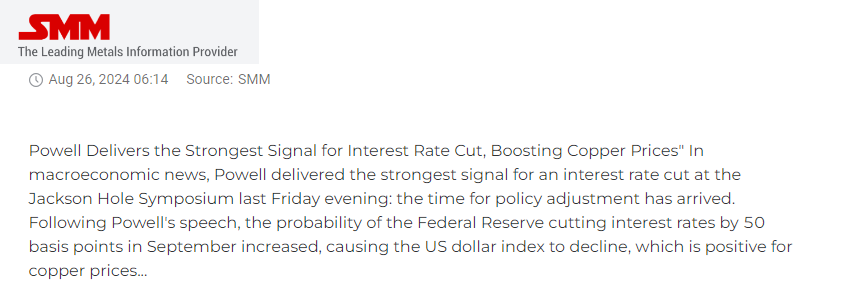The US pharmaceutical sector is poised for a year of transformation, driven by a confluence of regulatory shifts, technological advancements, economic pressures, and the increasing adoption of automation. As the industry navigates these changes, automation, particularly in the generation of Certificates of Analysis (COAs), will play a critical role in shaping the sector’s trajectory over the next 12 months.
Regulatory Environment and Policy Shifts
The regulatory landscape for the pharmaceutical industry is expected to undergo significant changes, particularly with the Biden administration’s ongoing push for drug pricing reforms. These reforms may empower Medicare to negotiate prices directly with pharmaceutical companies, potentially leading to reduced pricing power and shrinking profit margins across the industry. In response, companies are likely to turn to automation as a means of offsetting these financial pressures.
Automation can streamline various aspects of drug development and production, from research and development to manufacturing and distribution. By automating complex processes, companies can achieve greater efficiency, reduce human error, and ultimately lower costs. For instance, the automation of Certificate Of Analysis (COA) generation—critical for ensuring that pharmaceutical products meet required quality standards—can significantly reduce the time and resources needed to bring new drugs to market.
The Food and Drug Administration (FDA) is also expected to continue its focus on accelerating the approval process for innovative drugs, particularly those addressing unmet medical needs. In this context, automation will be essential in meeting the rigorous compliance requirements set by the FDA. Automated COA systems can help companies manage the intricate regulatory landscape more effectively by ensuring consistent documentation and adherence to quality standards, thus reducing the risk of delays or rejections during the approval process.
Biotechnology, Innovation, and the Impact of Automation
The pharmaceutical sector is witnessing rapid advancements in biotechnology, with personalized medicine emerging as a key growth area. Personalized medicine, which involves tailoring treatments based on individual genetic profiles, requires sophisticated data management and precise manufacturing processes. Automation will be critical in scaling these complex treatments, ensuring that they are produced consistently and in compliance with regulatory standards.
One of the most notable technological advancements in recent years has been the development of mRNA vaccines, which played a crucial role in combating the COVID-19 pandemic. The success of these vaccines has sparked widespread interest in expanding mRNA technology to other therapeutic areas, including cancer and infectious diseases. As pharmaceutical companies ramp up efforts to develop new mRNA-based treatments, automation will be indispensable in managing the high complexity and precision required for their production.
Automated systems can enhance every stage of the mRNA production process, from synthesizing the RNA strands to packaging and distribution. Additionally, COA automation ensures that every batch meets the stringent quality standards necessary for these advanced therapies. This not only improves efficiency but also builds trust with regulators and consumers, who demand the highest levels of safety and efficacy in these cutting-edge treatments.
Economic Factors, Market Dynamics, and the Strategic Role of Automation
Economic pressures, particularly rising inflation, are expected to impact the pharmaceutical sector significantly. The cost of raw materials, labor, and logistics has been steadily increasing, putting additional strain on profit margins. In this environment, automation offers a strategic advantage by enabling companies to streamline operations, reduce costs, and maintain profitability.
The automation of manufacturing processes, including the automated generation of COAs, is particularly important. COAs are essential documents that certify that pharmaceutical products meet specific quality criteria. Traditionally, the creation and management of COAs have been time-consuming and labor-intensive processes. However, with automation, companies can generate these documents quickly and accurately, reducing the likelihood of errors and ensuring faster compliance with regulatory requirements.
Automation is also likely to play a pivotal role in merger and acquisition (M&A) activity within the pharmaceutical sector. As companies seek to expand their portfolios and achieve economies of scale, those with advanced automation capabilities—particularly in areas like COA generation and quality control—will be seen as more attractive acquisition targets. Automation enhances operational efficiency and scalability, making these companies better positioned to compete in a challenging market.
Global Health Issues and the Increasing Importance of Automation
The pharmaceutical sector is still grappling with the aftermath of the COVID-19 pandemic, which has reshaped the industry in many ways. As the world continues to recover, companies involved in vaccine production and antiviral treatments are likely to see sustained demand. In this context, automation will be critical in maintaining production efficiency and ensuring that essential medicines are delivered to those who need them.
Automation also plays a crucial role in pandemic preparedness, a priority for governments and organizations worldwide. The automation of COA systems ensures that quality standards are met quickly and efficiently, facilitating the rapid production and distribution of essential medicines in response to future health crises. This capability is vital for maintaining public health and safeguarding against future pandemics.
Investor Sentiment, Stock Market Performance, and the Influence of Automation
The stock market is expected to remain volatile over the next 12 months, influenced by broader economic conditions, interest rate changes, and sector-specific developments. However, companies that demonstrate strong automation capabilities are likely to be more resilient and attract more investor interest. Automation not only enhances operational efficiency but also reduces risks associated with human error and regulatory compliance, making these companies more attractive to investors.
Moreover, environmental, social, and governance (ESG) considerations are becoming increasingly important to investors. Automation can play a significant role in enhancing a company’s ESG credentials. Automated processes, including COA automation, can reduce waste, improve energy efficiency, and ensure ethical clinical practices, aligning with investor expectations for sustainable and responsible business operations.
The US pharmaceutical sector is at a critical juncture, with automation set to play a transformative role over the next 12 months. As the industry faces regulatory changes, economic pressures, and ongoing global health challenges, companies that effectively integrate automation into their operations will be better positioned to navigate this complex landscape. Automation, particularly in COA generation, will be key to achieving greater efficiency, compliance, and scalability, helping companies to not only survive but thrive in a rapidly evolving market.
Sources:
PWC: https://www.pwc.com/us/en/industries/health-industries/library/pharma-life-sciences-deals-outlook.html
Fitch Ratings: https://www.fitchratings.com/research/corporate-finance/us-ira-may-weigh-on-long-term-global-pharma-growth-22-09-2023
Avenga: https://www.avenga.com/magazine/pharmaceutical-industry-trends/







